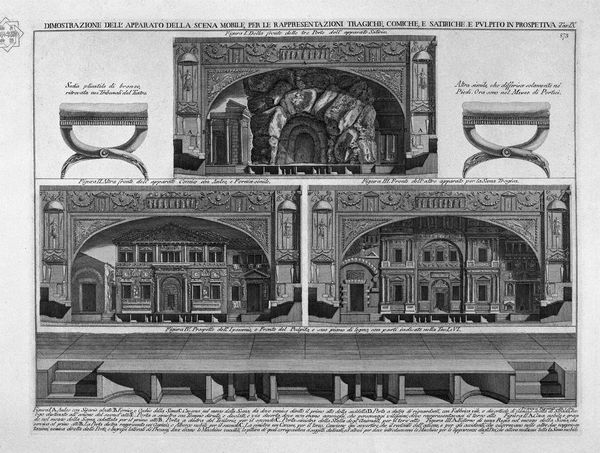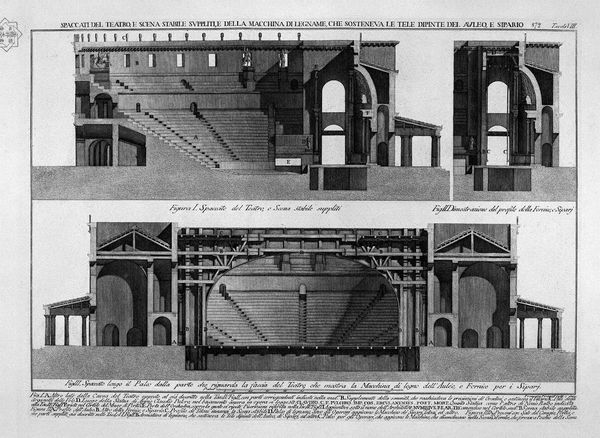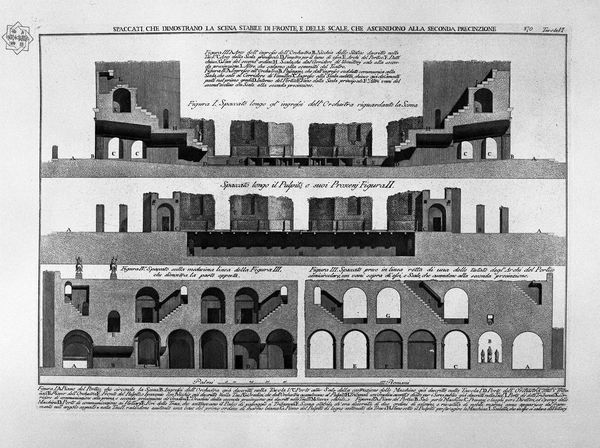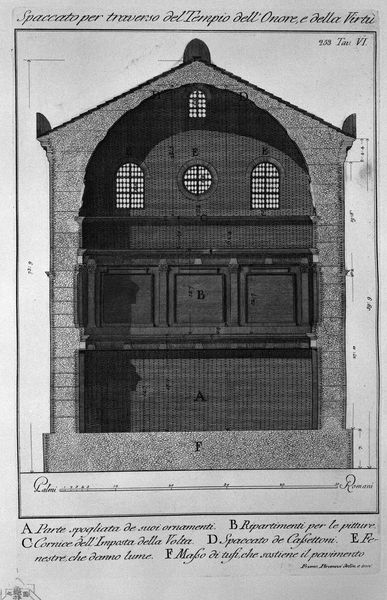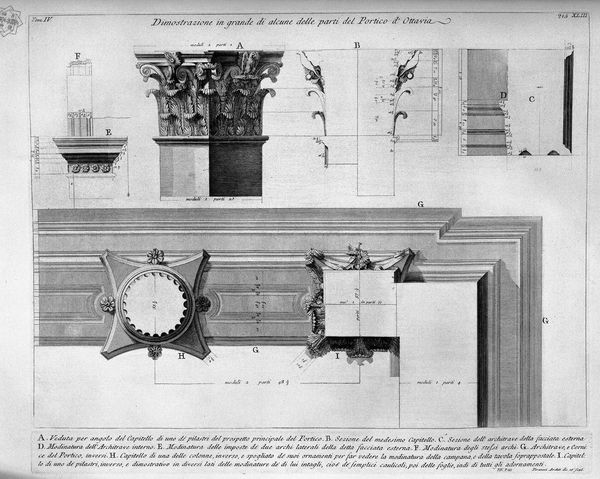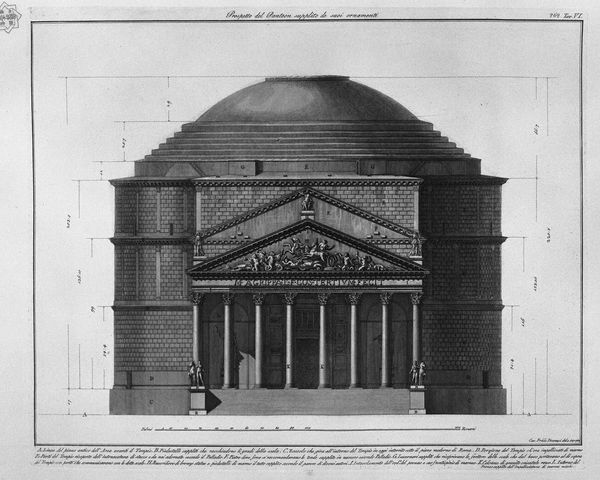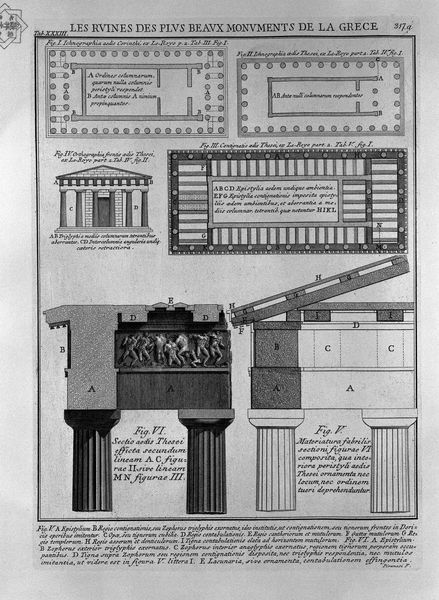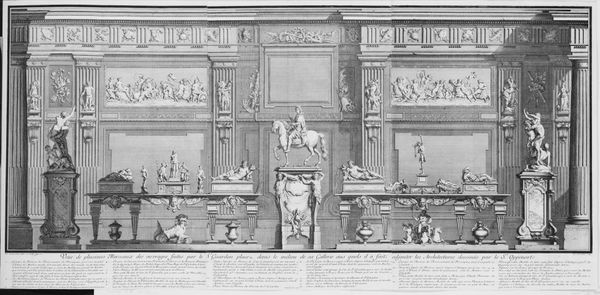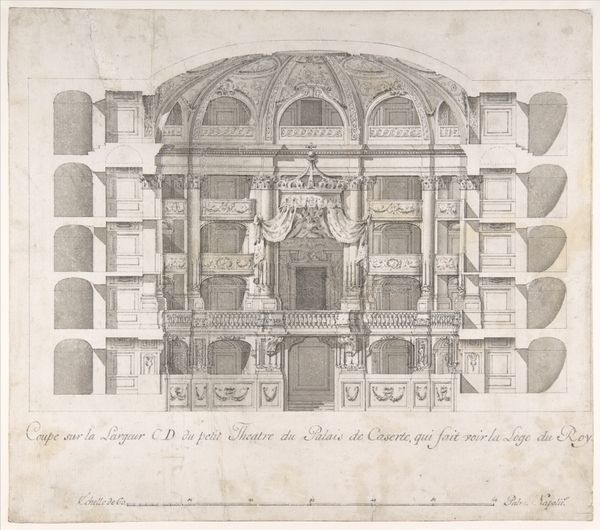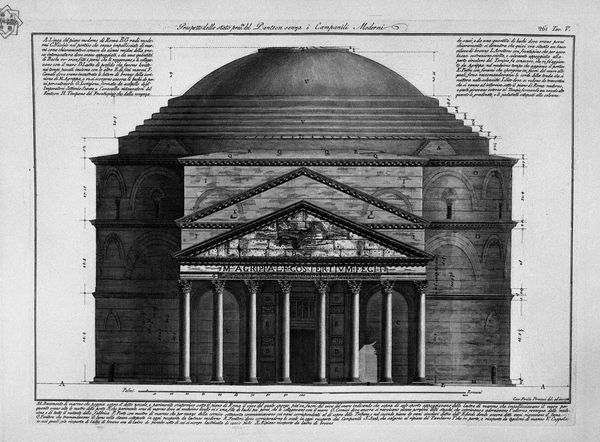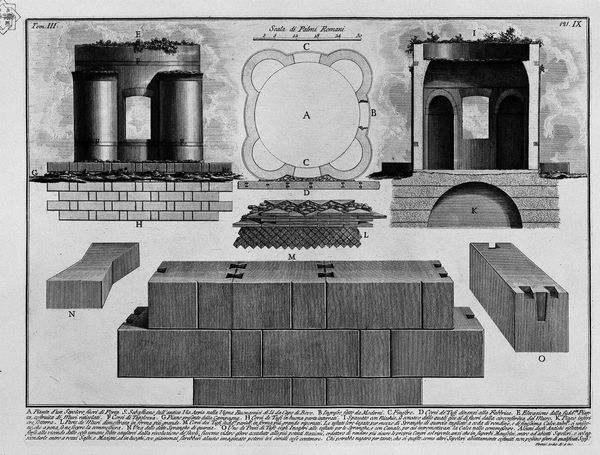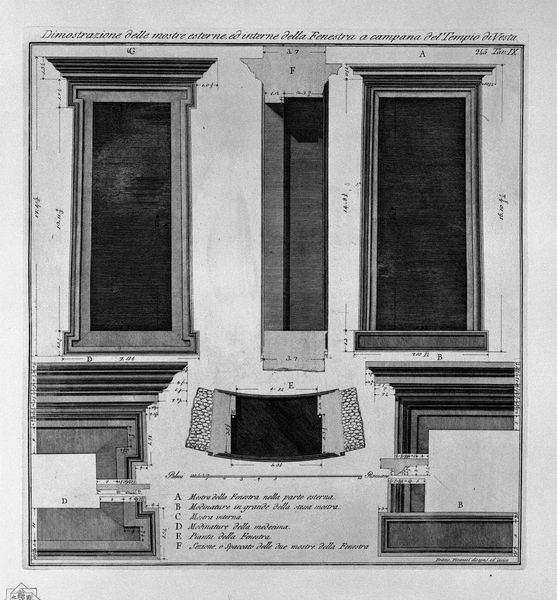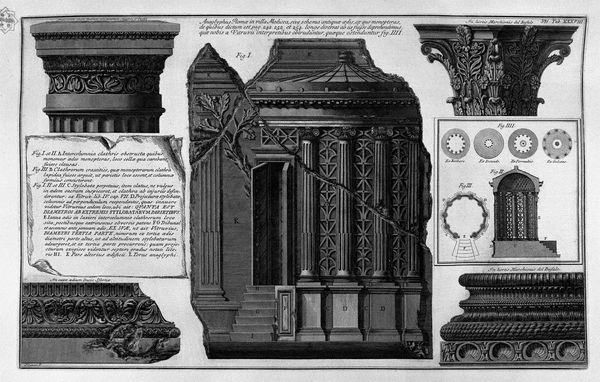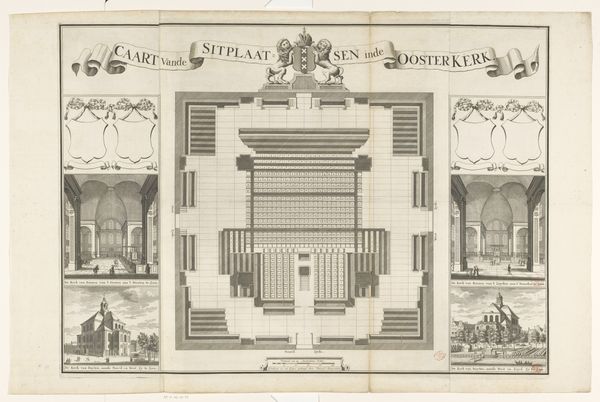
Split, showing the scene compensate for their stable, and the opposite of `classrooms, and the temporary suspension of the curtain
0:00
0:00
print, engraving, architecture
#
baroque
# print
#
old engraving style
#
perspective
#
form
#
line
#
engraving
#
architecture
#
columned text
Copyright: Public domain
Curator: This intricate engraving, whose full title is "Split, showing the scene compensate for their stable, and the opposite of `classrooms, and the temporary suspension of the curtain," presents a fascinating exploration of Baroque theatrical space. The artist is Giovanni Battista Piranesi. Editor: It feels very technical, almost architectural, with precise lines that create a sense of depth and a rather austere atmosphere. Not what I’d expect from something linked to the theatre! Curator: Piranesi uses engraving to map not just the physical form but also the idea of Baroque spectacle itself, doesn't he? Note how he uses meticulous detail to represent the elaborate architectural framework of the theatre. For period audiences, the very columned facade spoke of permanence and power, an imposing illusion crafted for the sake of artistic and political expression. Editor: Yes, but all I see is the labor! Just imagine the number of etched lines it took to produce this dense texture. I find myself contemplating Piranesi's work table, his tools, and the physical effort of creating this print. This would have circulated among a relatively wealthy clientele as commodities—decorative emblems of their elite status, and of the world of culture they inhabited. Curator: A print like this one helped spread Neoclassical taste, echoing grand, somewhat unattainable spaces that people across Europe knew through disseminated prints. You have to recall how powerfully theatre itself functioned as a visual metaphor in Baroque culture. Editor: A world available through the rise of this easily traded material object, this very engraving—disseminating a vision that might not otherwise reach such wide audiences, all the while requiring enormous craftsmanship. That tension between dissemination and handcrafted quality is key, I think. Curator: That's very well observed, because those shifting boundaries also speak of psychology—of public and private worlds. The theatre, with its symbolic displays of hierarchies, allowed those who were ‘performing’ their social position, even in real life. And engravings such as this became mnemonic devices… reminders and touchstones in that collective consciousness. Editor: The whole business, both on stage and through distribution, reflects how visual representation can solidify and shape social behaviors, values, and power dynamics... All captured in the web of engraved lines! Well, that's me done contemplating its impact, I learned more about perspective in both form and society. Curator: Precisely. Piranesi makes the viewer question and reflect on that role. For me it makes the artwork a mirror reflecting both tangible and ephemeral aspects of theatre and Baroque society.
Comments
No comments
Be the first to comment and join the conversation on the ultimate creative platform.
